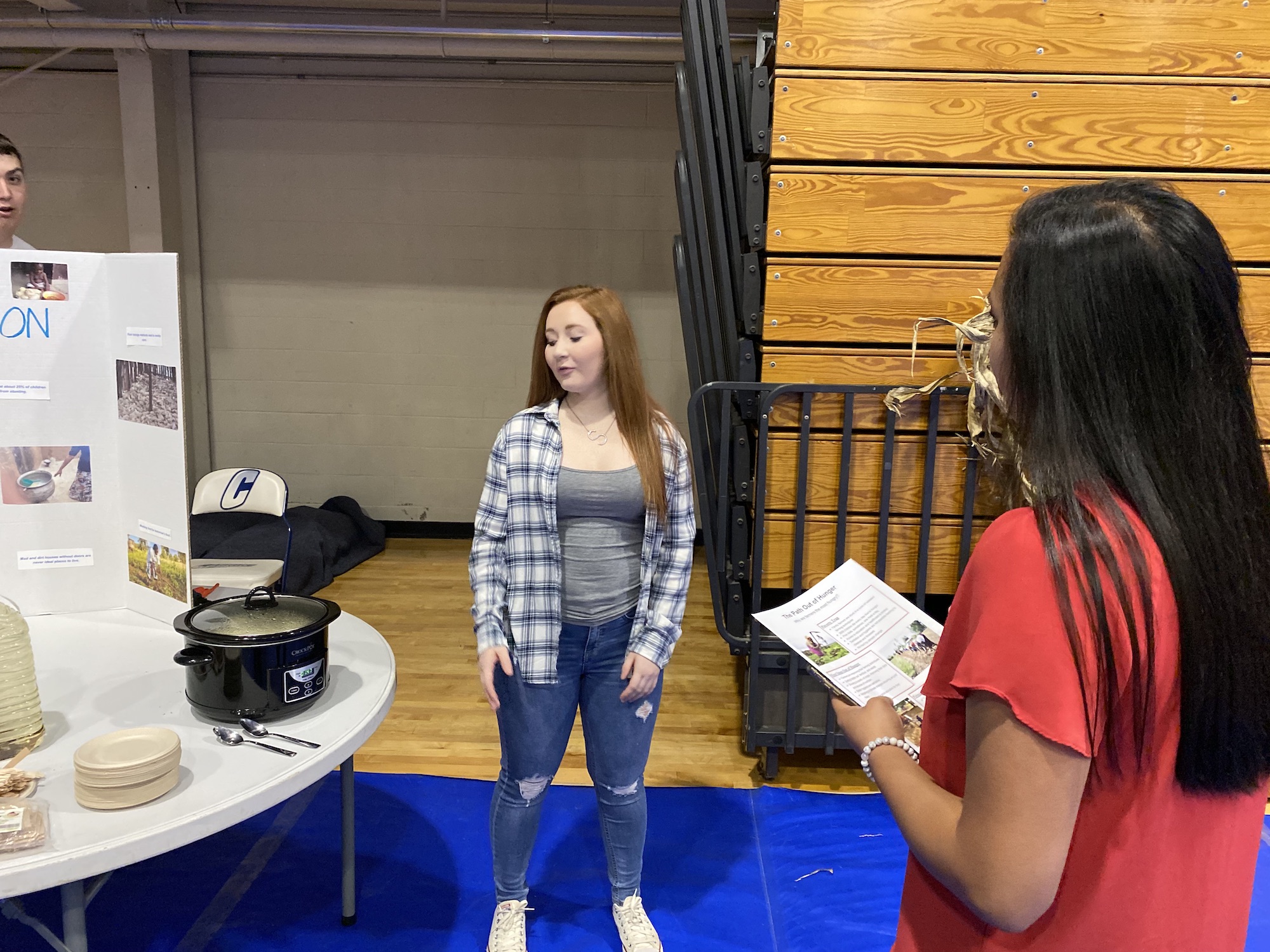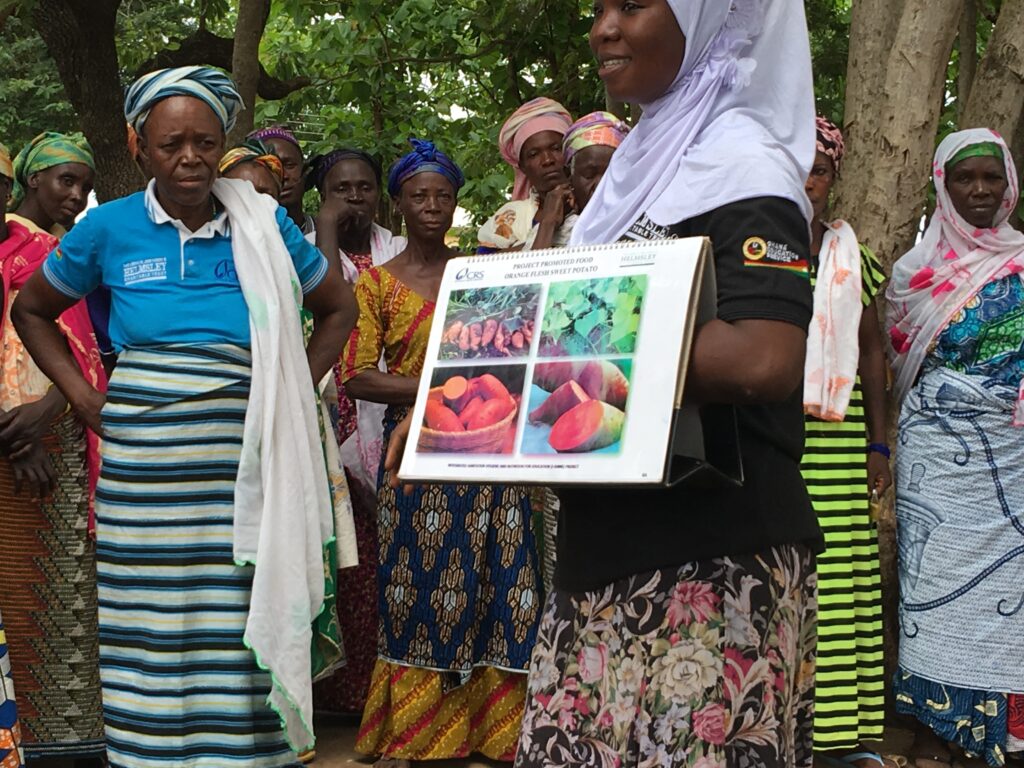Navigate the site:
1. Learn 2. Plan 3. Reflect 4. Advocate 5. Floor Plan 6. Home Page
Summary:
- “I’m starving! Let’s run to the store and get something!”
- “I really need to lose my Freshman 15! But can I just have one last double chocolate chip mocha?”
- “I’m so tired of eating in the cafeteria– let’s go eat at the mall. I’m starving!”
This is how we in the West sometimes think of hunger, but we are all also aware of true hunger in other parts of the world. What we are not often aware of is
- what are some of the true causes of hunger,
- what people are doing to find a path out of hunger, and
- what is our role in supporting their efforts.
That’s what this simulation is designed to help us learn.
4 areas in the simulation focus on
- (1) The causes of global hunger,
- (2) First steps out of hunger: early improvements communities take to get out of chronic hunger,
- (3) Long-term steps communities take to get out of hunger, and
- (4) What we can do.
1. Causes of global hunger (2-3 students).
- The entire class or group should learn about the causes of global hunger.
- “Living on One Dollar” is a great video to introduce the reality. This Amazon video shows the experience of four US college friends as they live on less than $1 a day for two months in rural Guatemala. They battle hunger, parasites and the realization that there are no easy answers.
- “The Last Hunger Season” film series is a set of a half dozen brief (5 minute) videos about a family in Kenya as they struggle with hunger and slowly move up of acute hunger. Part 1 video shows the day-to-day life of a rural farmer. Part 5 shows what it’s like to be a high school student experiencing hunger in Kenya.
- The Last Hunger Season: A Year in an African Farm Community on the Brink of Change is an excellent book.
- Another excellent video is Rick Steves’ Hunger and Hope: Lessons from Ethiopia and Guatemala.
- Some of the principal causes of Global Hunger:
- Seeds: the Green Revolution passed many regions of the world by. The old seeds used by subsistence farmers may be unproductive and not suited to changing climate conditions.
- Soil and poor farming techniques: the soil may be overworked, lacking in nutrients, and unable to produce abundant crops.
- Lack of current education on best farming practices: Agricultural practices that could produce better crops have not yet come to rural farmers.
- Climate change is putting additional strain on plants and water supply.
- Lack of savings to invest in improvements. Poverty leads to more poverty. Poverty trap.
- 3 million children under 5 die from under nutrition each year. 1 in 4 is stunted. Food production must double.

- Shown in picture above are items that depict the conditions of people who experience chronic hunger: poor and unstable diet (the pot of ugali), unclean water (in a water bottle darkened by tea), poor quality soil (a box holding soil with clay or sand and stones mixed in), poor farming tools (some handmade or broken gardening tools).

2. First steps out of hunger (2-3 students)
- CRS (Catholic Relief Services) Has a multi-stage program that helps small-holder farms take the first steps out of poverty and chronic hunger. This CRS program, Pathways to Prosperity, leads farmers through the stages of RECOVER, BUILD, and GROW.
- The first stage, RECOVER, helps farmers gain “food security and seed security.” It addresses what are the best seeds for the climate and conditions, how to improve their soil, how the gain the best agriculture and nutrition programming to maintain strength and health. Farmers also learn basic business practices and how to develop a community savings group. This brief CRS video, “Good Nutrition: It’s About More than What You Eat,” shows the importance of nutrition for life-long dignity.

Here we see some of the first steps out of hunger: better quality seeds adapted to current conditions, soil improved by composting, fertilizer. These result in healthier plants and a more diverse diet.

A community health promoter explains the way to diversify their planting and nutrition.
3. Long-term steps communities take to get out of hunger. (2-3 students)
- Once farmers have some stability, they can begin to learn and enhance further steps out of hunger. CRS identifies five key Smart Skills .
- (1) Farmers continue to learn how to organize as groups and cooperatives.
- (2) They continue to enhance their internal savings and lending groups to build capital.
- (3) They use cell phone technology to improve their marketing and sales.
- (4) They learn basic marketing skills.
- (5) They learn improved ways to manage their natural resource of soil, water, crop diversification, etc.
- Learn about CRS’s SILC (Savings and Internal Lending Communities) here and here-video.

A simple cellphone allows a smallholder farmer to get up-to-date weather forecasts and current market prices. The box is important to the group savings clubs villages can start.
4. What can we do: Advocacy (2-3 students).
- Following the three stations that gave examples of the ways communities of farmers can move from food insecurity to stability, participants want to know what they can do. We in the United States can assist our brothers and sisters around the world through Advocacy to our elected representative. Several students became knowledgeable about these sections.
- Advocacy:
- CRS’s LEAD THE WAY ON HUNGER campaign gives many tools to educate others and advocate with our elected representatives to support nutrition and farming programs overseas.

Two ways to help is to speak with others and educate them about what you’ve learned about hunger. A second way to help is to write emails to our elected representative to support nutrition programs and long-term aid to eliminate hunger and poverty.
Now click on the PLAN option to find out supplies you’ll need and how to set a simulation up.
Navigate the site:
1. Learn 2. Plan 3. Reflect 4. Advocate 5. Floor Plan 6. Home Page